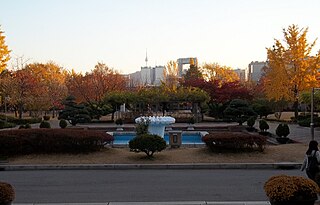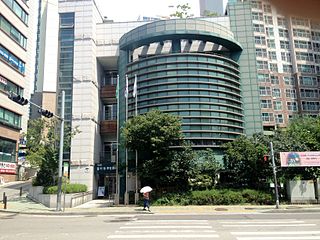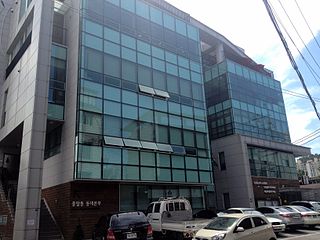
Ahyeon-dong (Korean: 아현동) is a dong, neighbourhood of Mapo District in Seoul, South Korea.
Hongeun-dong is a dong (neighborhood) of Seodaemun District, Seoul, South Korea.

Gyonam-dong is a dong (neighborhood) of Jongno District, Seoul, South Korea.

Ihwa-dong is a dong (neighborhood) of Jongno District, Seoul, South Korea.

Hwa-dong is a dong (neighborhood) of Jongno District, Seoul, South Korea. It is a legal dong administered under its administrative dong, Samcheong-dong.
Hongpa-dong is a dong (neighborhood) of Jongno District, Seoul, South Korea. It is a legal dong administered under its administrative dong, Gyonam-dong.
Dongsung-dong is a dong (neighborhood) of Jongno District, Seoul, South Korea. It is a legal dong administered under its administrative dong, Ihwa-dong.

Hagye-dong is a dong (neighborhood) of Nowon District, Seoul, South Korea.

Anam-dong (Korean: 안암동) is a dong, in the district of Seongbuk District, in Seoul, South Korea.

Donam-dong is a dong (neighborhood) of Seongbuk District, Seoul, South Korea.

Gireum-dong is a dong (neighborhood) of Seongbuk District, Seoul, South Korea.

Dongseon-dong is a dong in the district of Seongbuk District, in Seoul, South Korea.
Dongsomun-dong is a dong (neighborhood) of Seongbuk District, Seoul, South Korea.

Hawolgok-dong is a dong (neighborhood) of Seongbuk District, Seoul, South Korea.

Jangwi-dong is a dong, neighbourhood of Seongbuk-gu in Seoul, South Korea.

Jeongneung-dong is a dong, neighbourhood of Seongbuk-gu in Seoul, South Korea.
Seokgwan-dong is a dong, neighbourhood of Seongbuk-gu in Seoul, South Korea.

Jongam-dong is a dong, neighbourhood of Seongbuk-gu in Seoul, South Korea.
Samseon-dong is a dong, neighbourhood of Seongbuk-gu in Seoul, South Korea.
Sangwolgok-dong is a legal dong, neighbourhood of Seongbuk-gu in Seoul, South Korea.














